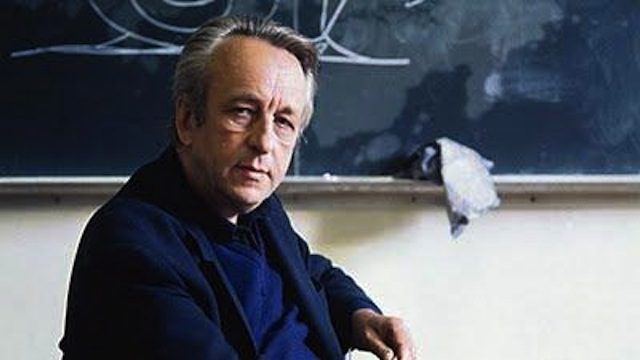In what follows, I will focus on ideas and not on their concrete relevance to the object of interpretation, and hence will not worry about whether the interpretation is "correct", or even whether it could ever be compelling with regard to interpretation in general.
Althusser designates two different temporal structures in the play El Nost Milan. On the one hand, there is empty time where nothing happens (typically existing as a long stretch with no real protagonist or particular characters of any individual import); on the other, we have a dialectical (Althusser also says "evental") time, a quick lightning-flash where the plot of the play develops, in other words a historical time.
The relationship between these two times is non-existent, meaning there does not seem to be any principle which accounts for the two of them, why the one transitions into the other, etc. Furthermore, the characters of the empty time have seemingly no relation to the characters of the evental time. We only have the names of the characters in the evental time.
Is there anything interesting to be found in this non-relation?
The empty time is also designated by Althusser as "the time of their situation itself" (100). With the benefit of hindsight, we can see this whole structure as so far obviously prefiguring Badiou's notion of the situation rent by the event. The event is absolutely un-related to the situation in which it occurs, and has no grounding or possible ontological relation to that situation (it is the later truth-process that somehow brings it into line with the situation and therefore gives its implications some real existence).
But then Althusser says something I regard as rather strange:
In [the melodramatic consciousness of the main character's father], the dialectic turns in a void, since it is only the dialectic of the void, cut off from the real world for ever. This foreign consciousness, without contradicting its conditions, can not emerge from itself by itself, by its own 'dialectic'. It has to make a rupture -- and recognize this nothingness, discover the non-dialecticity of this dialectic. (104)Here we have a properly ideological non-relation, as opposed to Badiou's later notion of a good communist non-relation. Non-relation is here presented in a modality to be avoided. It is thought thinking itself, and therefore is cut off from the real conditions of existence. Of course it is self-related, it thinks itself and therefore enters a "dialectic" of sorts with itself.
But it must nonetheless confront something other than itself in order to develop and to become a true dialectic. What, for Althusser, is this confrontation if not thought's entering into relation, becoming relational? Indeed, he states this rather forcefully:
If we carry our analysis of this condition a little further we can easily find in it Marx's fundamental principle that it is impossible for any form of ideological consciousness to contain in itself, through its own internal dialectic, an escape from itself, that, strictly speaking, there is no dialectic of consciousness: no dialectic of consciousness which could reach reality itself by virtue of its own contradictions; in short, there can be no 'phenomenology' in the Hegelian sense: for consciousness does not accede to the real through its own internal development, but by the radical discovery of what is other than itself. (108)First of all, it is obvious that Althusser cannot conceive of a non-relational confrontation. Second, we should ask the very difficult question of how thought's ideological "dialectic" is to make the leap from non-dialecticity, from itself, into external social reality. This rupture, this "radical discovery" - is there ever such a thing? External reality must exist in a non-relation to thought's "dialectic". But, Althusser believes, reality has a true dialectic of its own.
Source: http://vi.sualize.us/parallel_streams_minimal_b_amp_w_stripes_picture_7Vp5.html
How, then, is Althusser's representationalist account of the Marxist theory of history, of science, to be thought? What does thought do when it makes such a radical discovery? Of course this is really Althusser's project as a whole, but we can certainly make the question more focused and ask: Is the incorporation of external reality into thought possible as an extension of relationality (the Althusserian, dialectical view), or must it be a much more radical rupture in the sense of non-relation?
Here we should keep in mind Lacan's distinct contribution to speculative thought, the move from "there is no relation" to "there is a non-relation". Is ideology-science the only non-relation? Althusser writes that "there is no true critique which is not immanent and already real and material before it is conscious" (107). So the non-relation is only from one side, namely that of ideology. It is a unilateral non-relation. What this implies for critique I am not yet sure.
Some indication of these implications may be given in the following thought:
This relation, abstract in itself (abstract with respect to the consciousness of self -- for this abstract is the true concrete) can only be acted and represented as characters, their gestures and their acts, and their 'history' only as a relation which goes beyond them while implying them; that is, as a relation setting to work abstract structural elements (e.g. the different forms of temporality in El Nost Milan -- the exteriority of dramatic crowds, etc.), their imbalance and hence their dynamic. (110)Here, when something is abstract for consciousness it may yet be concrete in reality. And the opposite must be true as well. So we have a unilateral non-relation and a bilateral logic of abstraction. Abstraction is relative. A most interesting state of affairs. Now where should we go from here?





